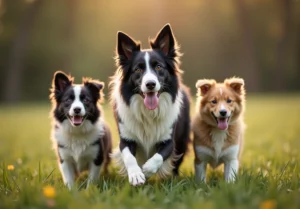Cats are known for their incredible flexibility and agility, often maneuvering through spaces and contorting their bodies in ways that leave us in awe. But have you ever wondered why cats are so flexible? In this blog post, we will explore the reasons behind their remarkable physical abilities.
Evolutionary Adaptations
Cats’ astonishing flexibility can be attributed to their evolutionary adaptations. Over millions of years, felines have developed bodies that are ideal for hunting and survival in the wild. Their ancestors needed to be agile to chase prey and escape predators, leading to the development of incredibly flexible bodies.
One key evolutionary adaptation that contributes to a cat’s flexibility is their muscle structure. Cats have a higher percentage of fast-twitch muscle fibers compared to humans, allowing for quick and powerful movements. This muscle composition enables cats to twist, turn, and leap with remarkable agility.
Another factor is their skeletal structure, which is designed to support their nimble movements. Cats have a loosely attached collarbone and highly flexible shoulder blades, providing a wide range of motion. Additionally, their hind legs are longer than their front legs, giving them the ability to leap great distances with ease.
It’s fascinating to see how the evolutionary history of felines has shaped them into the graceful and flexible creatures we know today.
Spinal Structure
A cat’s spinal structure plays a vital role in their flexibility and agility. Unlike humans, who have relatively inflexible spines, cats have an extraordinary degree of spinal flexibility due to several unique adaptations.
One key feature is their vertebrae, which have specialized interlocking joints that allow for a wide range of motion. This design enables cats to twist and bend their bodies in ways that would be impossible for many other animals.
Moreover, cats have an exceptionally elastic and muscular spine, with powerful core muscles that support their movements. This combination of flexibility and strength allows cats to contort their bodies effortlessly and land gracefully on their feet, even from great heights.
By understanding the remarkable structure of a cat’s spine, we gain insight into why these feline companions are such masters of flexibility and grace.
Muscle Composition
Curious why cats are so flexible? It all comes down to their muscle composition. Cats have a higher percentage of fast-twitch muscle fibers compared to other animals. These fibers allow for quick and powerful movements, perfect for hunting and climbing. Additionally, cats’ muscles are designed for bursts of activity, giving them the agility and flexibility to twist and turn with ease. So next time you see your feline friend contorting into a seemingly impossible position, remember, it’s all thanks to their unique muscle structure.
Collagen Levels
Ever noticed how cats seem to effortlessly stretch and twist their bodies? Well, their high levels of collagen play a significant role in their flexibility. Collagen is a protein found in connective tissues that provides support and elasticity. In cats, collagen is abundant in their tendons and ligaments, allowing them to stretch and maneuver with exceptional ease. So, next time you marvel at your cat’s ability to fit into the tiniest spaces, you can thank their collagen-rich bodies for that impressive flexibility.
Extra Tip: Encourage your cat’s flexibility by incorporating regular stretching exercises into their routine. This can help maintain their range of motion and keep their muscles and joints healthy.
Stretching Behaviors
Cats are known for their remarkable flexibility, and a key factor that contributes to this ability is their dedication to stretching. Stretching is an essential part of a cat’s daily routine as it helps maintain their flexibility by keeping their muscles and joints supple. When cats stretch, they extend their muscles to their full length, preventing them from becoming stiff and reducing the risk of injury. This frequent stretching also improves blood circulation, which is vital for overall muscle health and flexibility.
An interesting aspect of cats’ stretching behaviors is their use of a specific type of stretch known as the “play stretch.” This stretch is commonly observed when cats are about to engage in playful activities or when they wake up from a nap. The play stretch involves extending the front legs forward while keeping the back legs in a crouched position, creating a deep stretch from head to toe. By incorporating these playful stretches into their daily routine, cats not only maintain their flexibility but also prepare their bodies for movement and agility.
Joint Mobility
One of the reasons why cats are so incredibly flexible lies in their unique joint structure. Unlike many other animals, cats have ball-and-socket joints that allow for a wider range of motion. These specialized joints provide cats with the ability to rotate their limbs in multiple directions, giving them exceptional agility and flexibility. The ball-and-socket joints in cats’ shoulders and hips permit movements that might seem impossible for other animals, such as twisting their bodies to groom hard-to-reach areas or maneuvering through tight spaces with ease.
Additionally, cats have a highly developed spine consisting of up to 53 vertebrae, compared to about 34 in humans. This extended spinal flexibility enables cats to perform incredible contortions and twists, showcasing their exceptional agility and coordination. Cats can arch their backs, curl up into tight balls, and stretch out to impressive lengths, thanks to the adaptability of their spine.
In summary , the combination of frequent stretching behaviors and specialized joint mobility allows cats to achieve and maintain their impressive levels of flexibility. By incorporating stretching into their daily routine and harnessing the capabilities of their unique joint structure, cats can move with grace and fluidity, effortlessly navigating their surroundings with agility and ease.
Balance and Coordination
Have you ever wondered why cats seem to defy gravity with their incredible flexibility? One key reason lies in their superior balance and coordination. Cats have an exceptional sense of equilibrium, allowing them to move with grace and ease in any environment. This innate ability comes from their vestibular system, which helps them maintain posture and navigate obstacles effortlessly. Additionally, their finely tuned muscles and agile bodies play a crucial role in achieving such flexibility. So next time you watch your feline friend perform a jaw-dropping acrobatic feat, remember it’s all thanks to their remarkable balance and coordination.
Fascia Function
Let’s dive deeper into the fascinating world of a cat’s fascia and how it contributes to their impressive flexibility. Fascia is a connective tissue that forms a continuous network throughout the body, providing support and structure to muscles and organs. In cats, this intricate web of fascia plays a crucial role in allowing for smooth, fluid movement. It acts as a kind of internal tensional network, helping to distribute forces and maintain elasticity, which is essential for their agility and flexibility. By keeping their fascia healthy and flexible, cats can perform amazing feats of acrobatics and contortions with ease. So next time you marvel at your cat’s ability to twist and turn with grace, remember it’s all thanks to their amazing fascia function.
Additional Insight:
– Cats have a higher concentration of fast-twitch muscle fibers compared to humans, which gives them quick bursts of energy and enhances their flexibility during sudden movements.
Remember, understanding how a cat’s balance, coordination, and fascia function work together is the key to unravelling the mystery behind their incredible flexibility. Next time you observe your furry friend effortlessly curling up into a tight ball or executing a flawless high jump, you’ll appreciate the remarkable science behind their flexibility.
Fun Facts About Cat Flexibility
Curious about why cats can bend, twist, and contort with such ease? Let’s dive into some fascinating insights that shed light on these agile creatures!
Muscle Structure: Cats have a unique muscle structure that allows for incredible flexibility. Their muscles are highly elastic, enabling them to stretch and retract with remarkable ease.
Vertebral Column: With extra vertebrae compared to humans, cats have a more flexible spinal column. This abundance of vertebrae gives them the ability to twist and turn their bodies in ways that seem almost supernatural.
Collagen Content: Cats have a higher collagen content in their tendons and ligaments, making them more flexible than many other animals. This increased collagen allows for enhanced range of motion without sacrificing strength.
Evolutionary Adaptation: Over centuries of evolution, cats have honed their flexibility to become expert hunters. Their supple bodies enable them to navigate various terrains, pounce on prey, and escape danger with astonishing agility.
Exciting, right? These fun facts showcase just how incredible and adaptable our feline friends truly are!
Uncover the Secrets Behind Cat Flexibility
Have you ever wondered why cats can contort themselves into seemingly impossible positions? Let’s explore the fascinating reasons behind their incredible flexibility and agility.
Cats possess a unique clavicle structure that allows their shoulder blades to rotate freely, giving them enhanced mobility and flexibility in their front limbs. This anatomical feature enables cats to twist and turn their bodies with ease, helping them land on their feet even after a fall.
Additionally, cats have double-jointed spines, which contribute to their remarkable flexibility. This extra flexibility in their backbone allows cats to arch their backs, twist their bodies, and squeeze through tight spaces effortlessly.
Moreover, a cat’s limb placement beneath their bodies, rather than on the side like dogs, provides them with a low center of gravity. This positioning, coupled with their flexible spine and agile muscles, gives cats the ability to leap, climb, and explore with grace and precision.
By unraveling these secrets behind cat flexibility, we gain a deeper appreciation for the innate abilities that make our feline companions such skilled acrobats.
Alex, a passionate animal lover, has experience in training and understanding animal behavior. As a proud pet parent to two dogs and three cats, he founded AnimalReport.net to share insights from animal experts and expand his knowledge of the animal kingdom.




